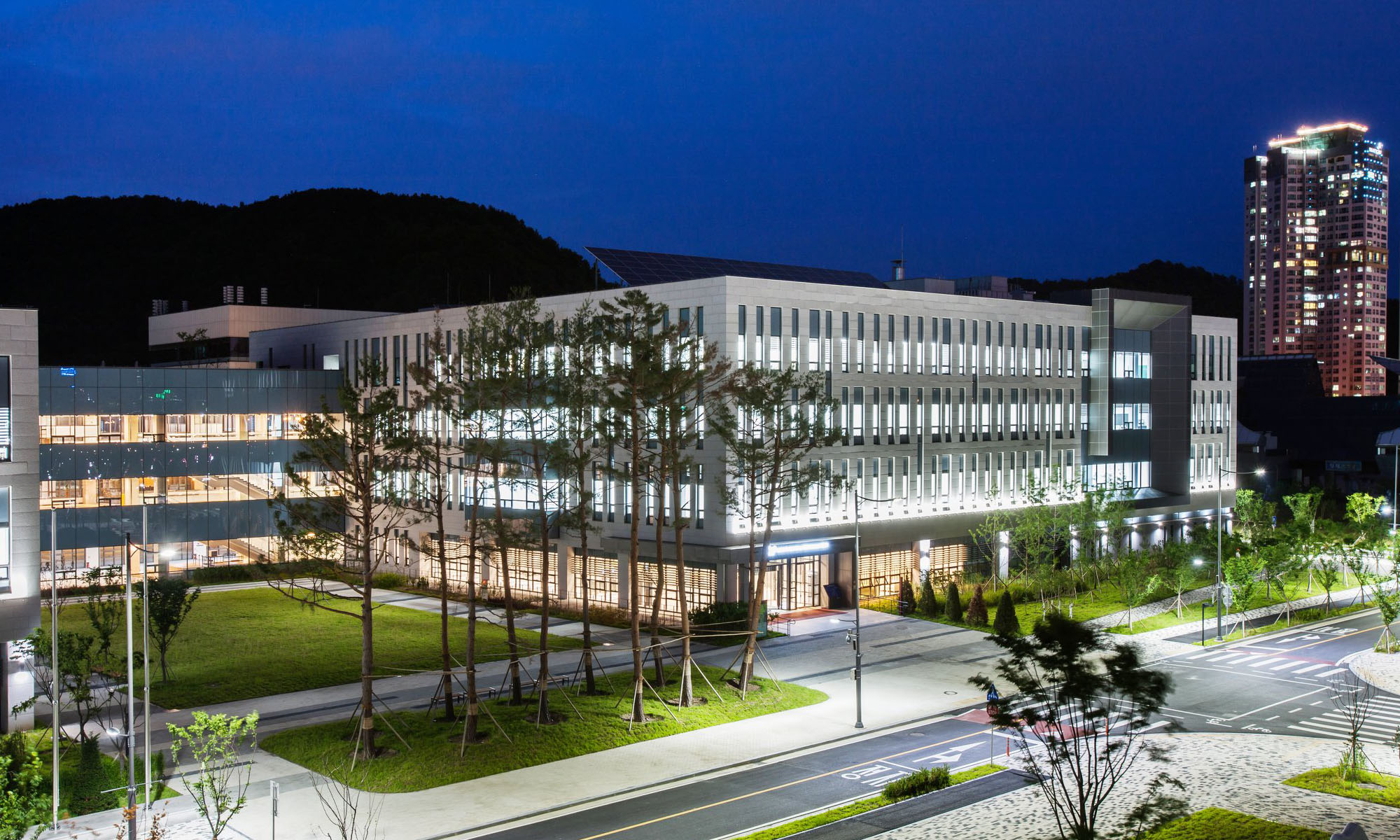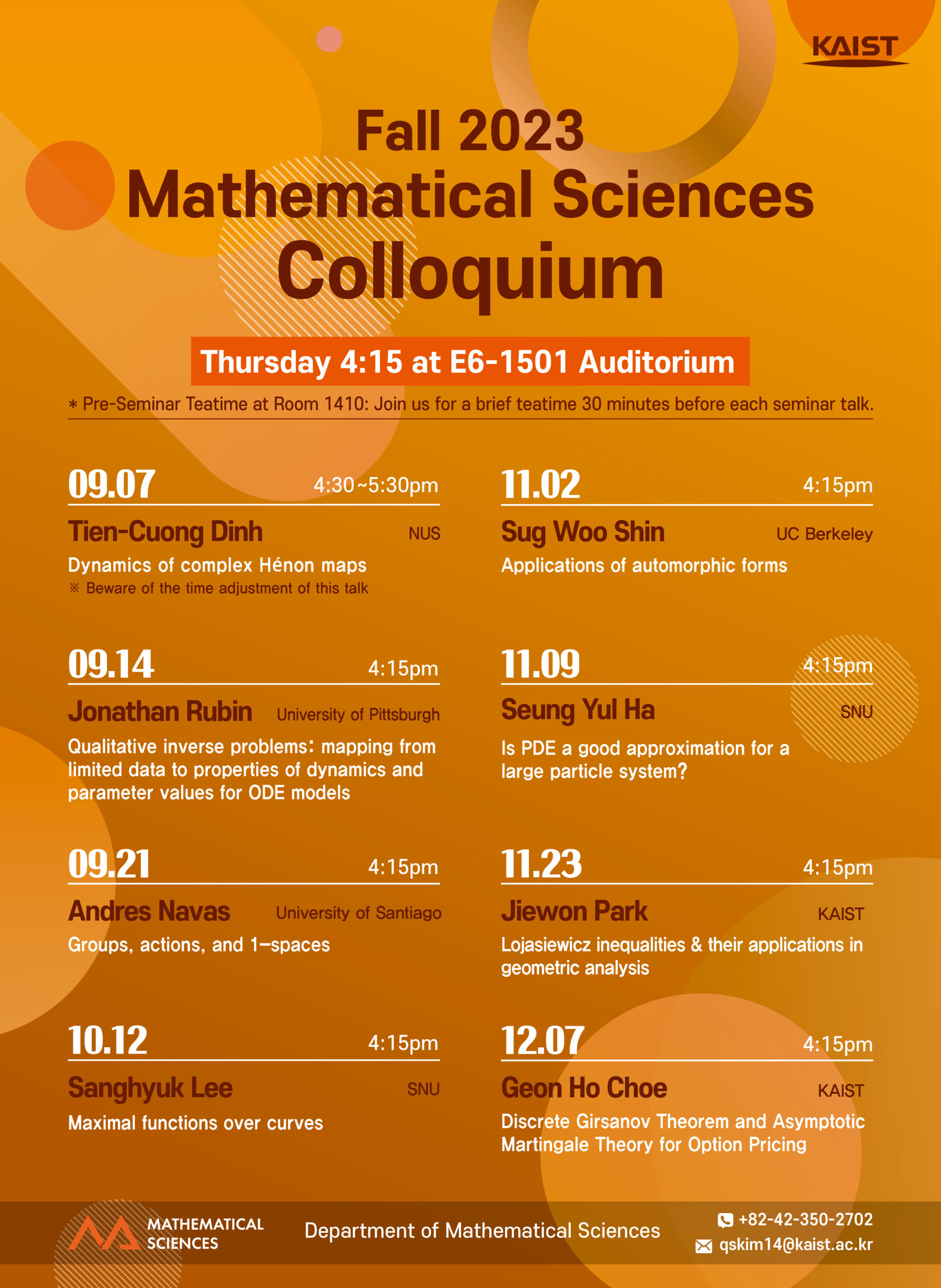We will discuss about “Generalized Michaelis–Menten rate law with time-varying molecular concentrations”, Lim, Roktaek, et al.,bioRxiv (2022): 2022-01 Abstract The Michaelis–Menten (MM) rate law has been the dominant paradigm of modeling biochemical rate processes for over a century with applications in biochemistry, biophysics, cell biology, and chemical engineering. The MM rate law and its …
Seminar
Calendar of Events
|
Sunday
|
Monday
|
Tuesday
|
Wednesday
|
Thursday
|
Friday
|
Saturday
|
|---|---|---|---|---|---|---|
|
0 events,
|
0 events,
|
0 events,
|
0 events,
|
0 events,
|
1 event,
-
|
0 events,
|
|
0 events,
|
0 events,
|
0 events,
|
1 event,
-
Abstract Mathematical models of biological systems, including neurons, often feature components that evolve on very different timescales. Mathematical analysis of these multi-timescale systems can be greatly simplified by partitioning them into subsystems that evolve on different time scales. The subsystems are then analyzed semi-independently, using a technique called fast-slow analysis. I will briefly describe the … |
0 events,
|
1 event,
-
We will discuss about “Exact solution of a three-stage model of stochastic gene expression including cell-cycle dynamics”, Wang, Yiling, et al., bioRxiv (2023): 2023-08. Abstract The classical three-stage model of stochastic gene expression predicts the statistics of single cell mRNA and protein number fluctuations as a function of the rates of promoter switching, transcription, translation, … |
0 events,
|
|
0 events,
|
0 events,
|
0 events,
|
0 events,
|
1 event,
-
We will discuss about “Antithetic proportional-integral feedback for reduced variance and improved control performance of stochastic reaction networks ”,Briat, Corentin, Ankit Gupta, and Mustafa Khammash., Journal of The Royal Society Interface 15.143 (2018): 20180079 Abstract The ability of a cell to regulate and adapt its internal state in response to unpredictable environmental changes is called … |
0 events,
|
|
|
0 events,
|
0 events,
|
1 event,
-

Abstract: Typically, the mathematical description of reaction networks involves a system of parameter-dependent ordinary differential equations. Generally, one is interested in the qualitative and quantitative behavior of solutions in various parameter regions. In applications, identifying the reaction parameters is a fundamental task. Reduction of dimension is desirable from a practical perspective, and even necessary when … |
0 events,
|
1 event,
-
We will discuss about “A data-driven approach for timescale decomposition of biochemical reaction networks”, Amir Akbari, Zachary B. Haiman, Bernhard O. Palsson, bioRxiv (2023) Abstract Understanding the dynamics of biological systems in evolving environments is a challenge due to their scale and complexity. Here, we present a computational framework for timescale decomposition of biochemical reaction … |
0 events,
|
|
|
0 events,
|
0 events,
|
0 events,
|
0 events,
|
0 events,
|
0 events,
|


